“After Jesus was born in Bethlehem in Judea, during the time of King Herod, Magi from the east came to Jerusalem and asked, ‘Where is the one who has been born the king of the Jews? We saw his star in the east and have come to worship him.’” Matthew 2:1,2
The word “Magi” comes from the Greek magos meaning “one of a learned and priestly class.” The Persian word used to describe these men in their society was magush meaning “magician.” There are at least 85 paintings of the coming of the Magi in the Roman catacombs. They not only show the believer’s adoration of Christ, but they shout, “Gentiles, not Jews, were the first people to recognize who Jesus was and to worship Him as the Messiah!” The birth of Jesus was the most important event in history according to the Christians. The Gentile Roman Christians identified with the Gentile Arab Magi and honored them in their necropolises.
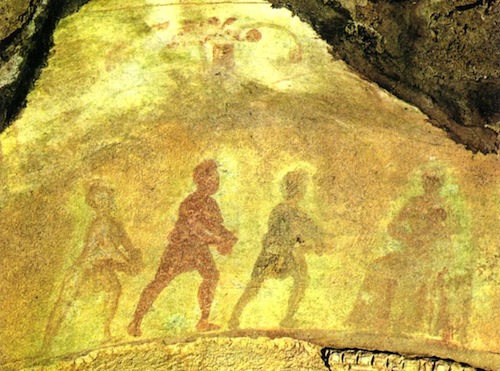
Early Christians, also, identified many Old Testament Scriptures with the coming of the Magi:
“Nations will come to your light and kings to the brightness of your dawn….Herds of camels will cover your land, young camels of Midian and Ephah, and all from Sheba (Ehiopia) will come bearing gold and incense and proclaiming the praise of the Lord.” Isaiah 60:3,6
“The kings of Tarshish and distant shores will bring tribute to him. The kings of Sheba and Seba (Yemen) will present him with gifts. All kings will bow down to him and all nations will serve him.” Psalm 72:10,11
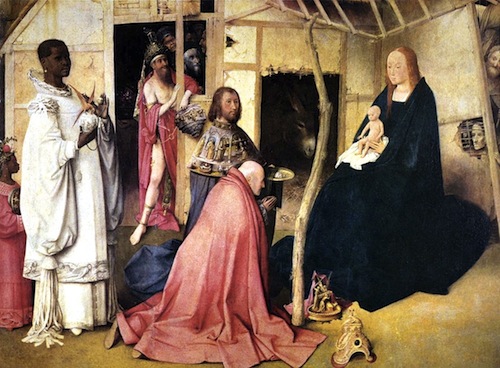
“This is what the Lord says—the Redeemer the Holy One of Israel—to him who was despised and abhorred by the nation, to the servant of rulers: Kings will see you and rise up, princes will see and bow down, because of the Lord who is faithful, the Holy One of Israel who has chosen you.” Isaiah 49:7
In the ancient Middle Eastern world these Magi were trusted advisors to kings, were learned men proficient in the knowledge of mathematical calculations, astronomy, medicine, astrology, alchemy, dream interpretation and history as well as practitioners of magic and paranormal arts. As far back as 604 BC King Nebuchadnezzar of Babylon had a troubling dream and “summoned the magicians, enchanters, sorcerers and astrologers to tell him what he had dreamed.” (Daniel 2:2) His wise men, his magi, could not interpret the dream. Daniel was able to ascertain the meaning and Nebuchadnezzar made him his Prime Minister. (Daniel 2:46-49)
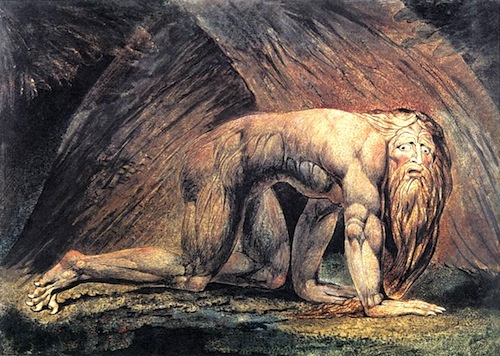
Ancient kings needed and relied upon Magi for advice and discernment as modern rulers rely on their advisors. The Magi in the Bible came “from the east.” (Matthew 2:1) The East at the time of Christ’s birth meant Media, Persia, Assyria and Babylonia, countries now encompassed by Iran and Iraq. Justin Martyr in 160 said, “Magi from Arabia (modern Saudi Arabia) came to Herod.” Clement of Alexandria (c.150-215) in the Stromata says they came from Persia.
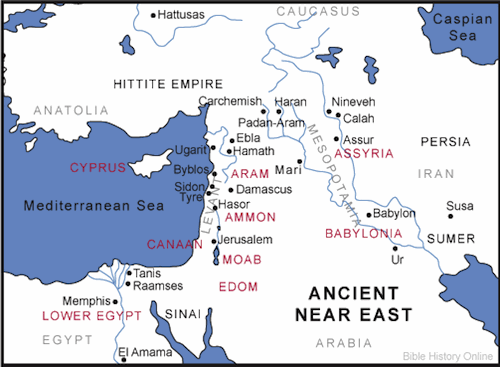
There were not three wise men. The Magi were not kings. They did not come to the manger scene and their names were not Gaspar, Melchior and Balshasar. Origen in c. 250 was the first to give them these names. By the 7th century, and even now, the most educated accept as fact that there were three wise men. The Bible does not tell us how many Magi came to Palestine. It only says: “Magi from the east came to Jerusalem.” Matthew 2:1
In one catacomb painting in St. Peter Cemetery there are 2 Magi. In the Lateran Museum and in the Catacomb of Peter and Marcellinus there are 3. In the Domitilla Catacomb there are 4.
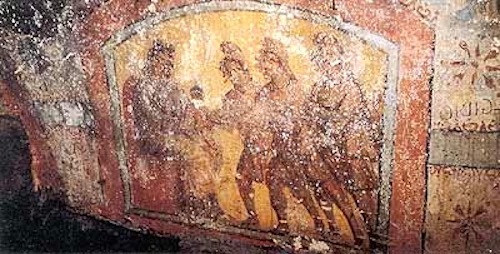
A vase painting in the Kircherian Museum in Rome has 8 wise men crowding the house where Jesus and Mary reside. The number of Magi in very early Christian art ranges from two to a gaggle. Legend and Christmas carols have blindly assumed there were three wise men because there were three gifts and because Origen had given them three names. All we know for sure is that some Magi made the long journey from the East to adore “the one who (had) been born king of the Jews.” Matthew 2:2
We Three Kings Of Orient Are, Written in 1857 by John Henry Hopkins, rector of Christ Episcopal Church in Williamsport, Pennsylvania. Origen’s speculation goes on.—Sandra Sweeny Silver
